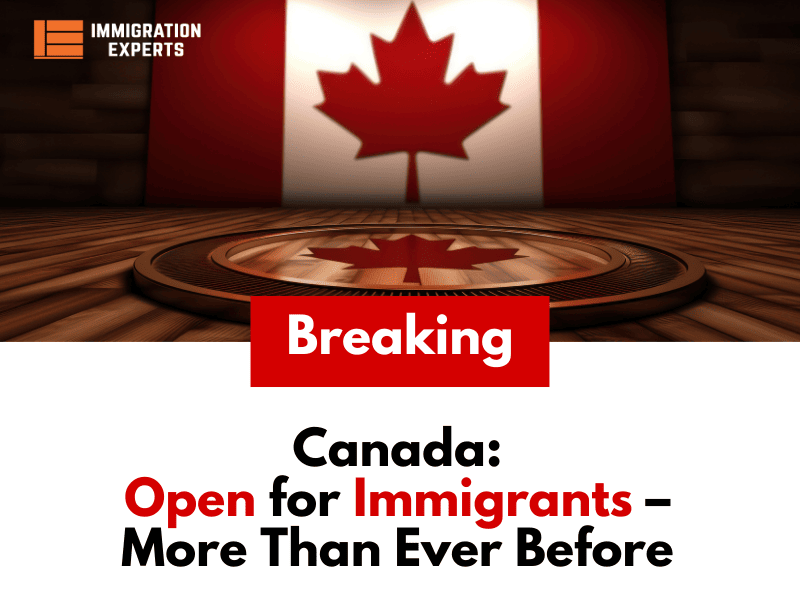051 8439995, 042 35911332

The Royal Bank of Canada’s economic update supports unchanged immigration levels for stability. According to the update, maintaining current immigration levels benefits the government. In the long term, an increase in newcomers is necessary to balance the age structure. This approach is crucial for sustaining the country’s economy and its momentum.
The Royal Bank of Canada’s economic update underscores the importance of maintaining current immigration levels for stability. However, it notes that the existing annual intake of 1.3% of the population falls short. To effectively stabilize the age structure, an intake of approximately 2.1% is deemed necessary for long-term sustainability. The report emphasizes the significance of increasing newcomers to ensure the country’s economic resilience and maintain momentum.
Increase in Canada’s Population by Immigration
The latest release from the bank highlights that the federal government’s new immigration plan remains constant. In the upcoming three years, Canada intends to welcome 485,000 newcomers in the next year, followed by 500,000 in 2025 and the same number in 2026.

The report highlights a shift in the recent pattern of increasing immigration targets annually. This marks a departure from the previous trend, where Canada’s final immigration target grew by 36% between 2020 and 2023. For the past three decades, the immigration system has consistently aimed to add around 0.8% of the population annually. Currently, the target is to incorporate 13 new permanent residents for every 1,000 people each year.
The bank observes that the government is reacting to the ongoing infrastructure crisis. This crisis has led to housing shortages nationwide, causing real estate and rental prices to spike.
Canada Welcoming Permanent Residents From Temporary Residents Pool
The report emphasizes Canadian concerns regarding the record levels of international students and temporary residents in the past two years. In the 2022-23 period, net inflows of temporary residents exceeded immigration inflows by 1.5 times, a first in the 50-year tracking history. The trend of drawing permanent residents from the pool of temporary residents is rising. However, not all individuals in this pool will successfully transition to permanent residency.
The bank approves the government’s overall immigration numbers but highlights the need for future increases. Sustaining Canada’s age structure stability requires a balance among young, middle-aged, and old populations.
The report indicates that 21 newcomers per thousand residents are required to attain a balanced age structure.
The report suggests that Ottawa should “double down” on two fronts.
The report underscores the importance of addressing an unrestrained temporary resident population. This is crucial as it may undermine support for permanent residents, who contribute significantly to the long-term Canadian economy.
Secondly, Canada must strategically select immigrants and future immigrants among temporary residents for their strong long-term economic prospects. This includes individuals in highly educated fields. Such an approach ensures Canada retains the benefits of increased immigration, offsetting or mitigating short-term costs.
